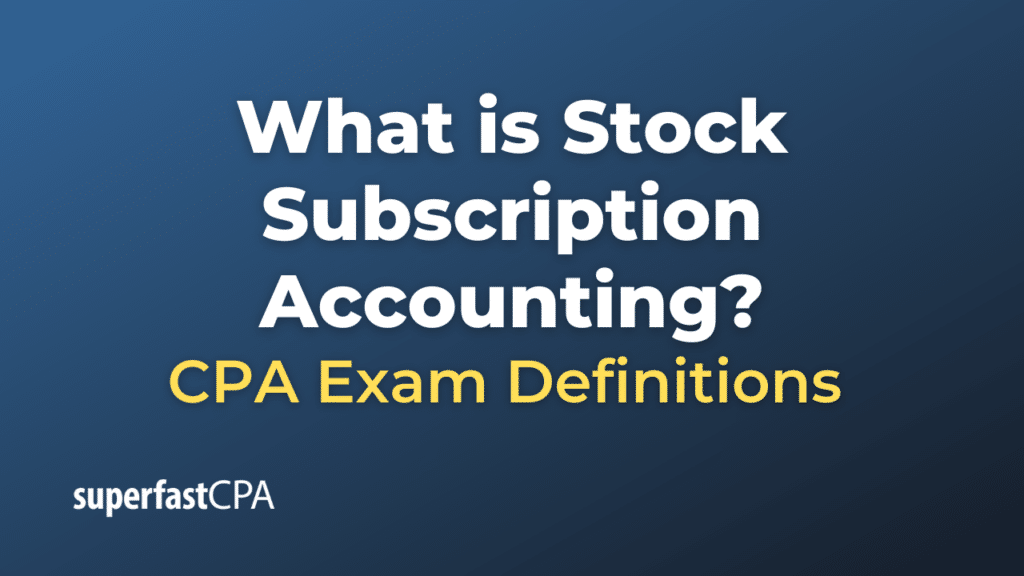Stock Subscription Accounting
Stock subscription accounting refers to the accounting treatment for situations when a company agrees to issue shares to an investor (or a group of investors) at a future date in exchange for cash. Instead of receiving the full payment for the shares immediately, the company agrees to receive it in installments or at a later specified date. This method is typically used by startups or private companies to secure funding without immediately issuing shares.
Here’s how stock subscription accounting works:
- Subscription Agreement: A company and an investor sign an agreement, wherein the investor agrees to buy shares at a specific price, but not all cash is paid upfront. Instead, the investor might provide a down payment and agree to pay the rest later.
- Initial Recognition : When the company receives the initial subscription payment (but not the full amount), it credits this to a “Subscriptions Receivable” account and debits “Cash. On the equity side, instead of crediting “Common Stock” directly (since the shares haven’t been fully paid for and issued yet), it credits a “Subscriptions Paid in Advance” or a similar liability account.
- Final Payment: Once the investor makes the final payment as per the subscription agreement, the company debits “Cash” and credits “Subscriptions Receivable”, thereby settling the receivable. At this point, since the shares have been fully paid for, the liability “Subscriptions Paid in Advance” is debited, and “Common Stock” (or relevant equity account) is credited.
Example of Stock Subscription Accounting
A scenario to explore stock subscription accounting:
Scenario:
GammaTech Enterprises:
- GammaTech wants to fund a new project and decides to issue 50,000 shares to raise capital.
- Investor Y expresses interest and enters a subscription agreement to purchase these shares at $20 each, totaling $1,000,000.
- Investor Y agrees to make an upfront payment of $200,000 and four quarterly payments of $200,000 each.
- Upon signing the subscription agreement and receiving the initial payment:Debit: Cash – $200,000Credit: Subscriptions Receivable – $1,000,000 (the full receivable amount)Credit: Subscriptions Paid in Advance (Liability) – $200,000 (acknowledging the initial payment)
- At the end of the first quarter, when the first quarterly payment is made:Debit: Cash – $200,000Credit: Subscriptions Receivable – $200,000(Again, equity hasn’t changed since the shares are not fully paid for.)
- By the end of the second quarter, GammaTech’s project gains massive traction. Seeing the potential, Investor Y decides to pay the remaining subscription amount ahead of schedule:Debit: Cash – $600,000 (remaining balance paid all at once)Credit: Subscriptions Receivable – $600,000At this point, since the entire subscription amount has been paid:Debit: Subscriptions Paid in Advance – $1,000,000Credit: Common Stock – $1,000,000 (shares are now issued)
With this scenario, we see a case where an investor decides to expedite their payments due to external factors (like the project’s success). This change affects the schedule of cash inflows for the company and the timing of the stock issuance.
Such situations highlight the flexibility stock subscriptions can provide to both companies and investors, allowing for adjustments based on changing circumstances.













